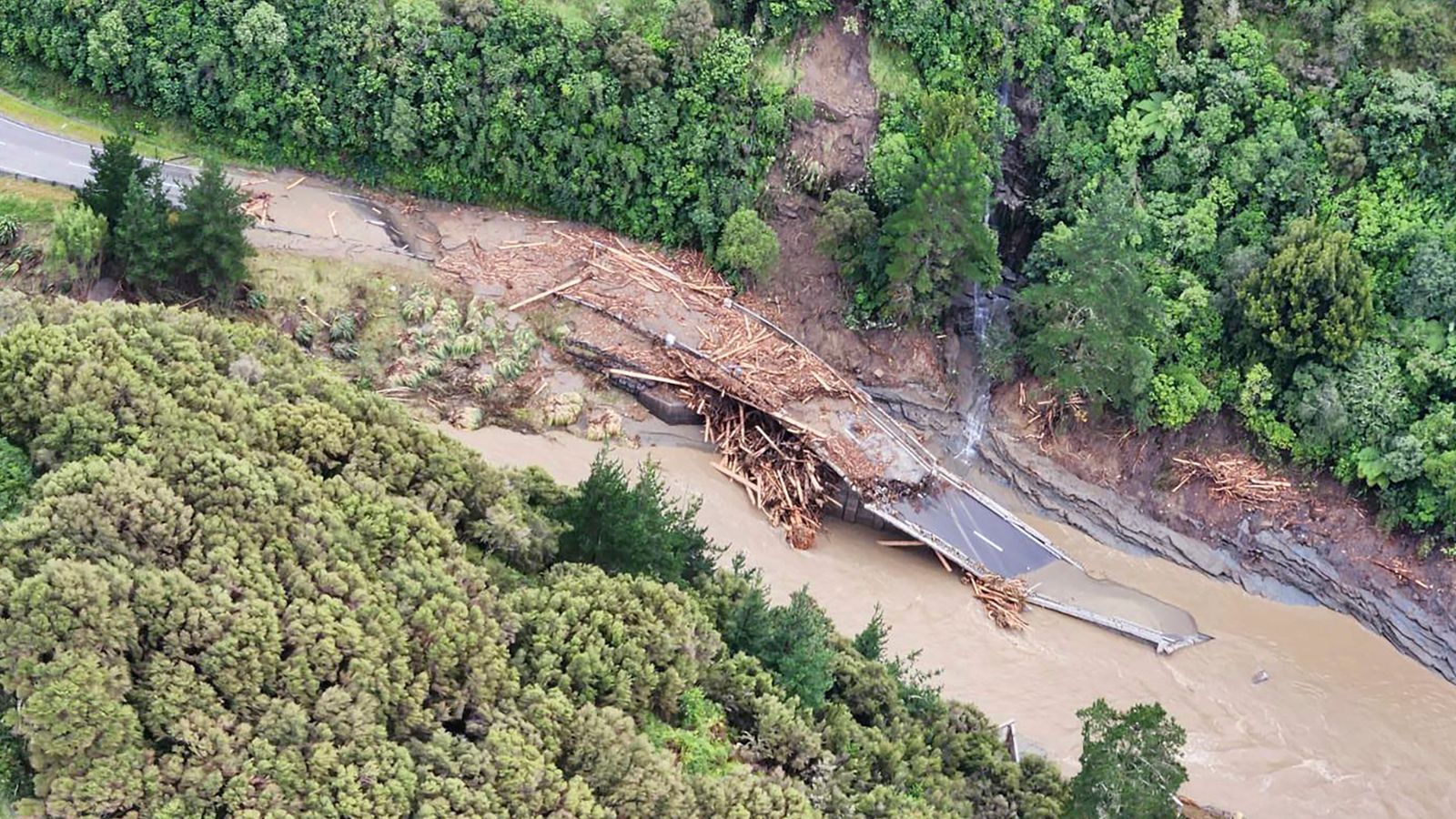At least four people have died – including a child – after Cyclone Gabrielle caused extensive flooding and landslides in New Zealand.
The cyclone struck the country’s north on Monday and has brought more destruction to the nation of five million people than any weather event in decades.
Police say at least four people are confirmed to have been killed by the storm, including a child caught in rising water at Eskdale on Hawke’s Bay.
The body of a volunteer firefighter was retrieved from a landslide that destroyed a flooded house near Auckland on Hawke’s Bay, Emergency Management Minister Kieran McAnulty has said.
A woman was also killed by a landslide in the Hawke’s Bay area, he added.
All four fatalities occurred near the same North Island east coast bay.
Helicopters will help make the final 25 rescues of individuals and family groups on Wednesday.
New Zealand declared what is only its third ever national state of emergency on Tuesday, enabling the government to support affected regions and provide additional resources.
Auckland, New Zealand’s biggest city, is covered by the alert – as are the regions of Northland, Tairawhiti, Bay of Plenty, Waikato and Hawke’s Bay.
A weather station in the Hawke’s Bay and Napier region recorded three times more rain over Monday night than usually falls for the entire month of February, authorities said.
More than 300 people were rescued Tuesday from that flooded bay area on the North Island east coast, including 60 stranded on a single roof, Mr McAnulty said.
“Our emergency services are still carrying out rescues and land searches in a number of places,” he told reporters.
Around 9,000 people have been forced from their homes since Monday, with several communities isolated by floodwaters and landslides, he said.
“Everyone knows we have a long path ahead of us as we deal with extensive damage to homes, businesses, roads and bridges and other fundamental parts of our infrastructure,” Mr McAnulty said.
“This is a significant disaster and it is going to take many weeks for those areas most effected to recover.”






